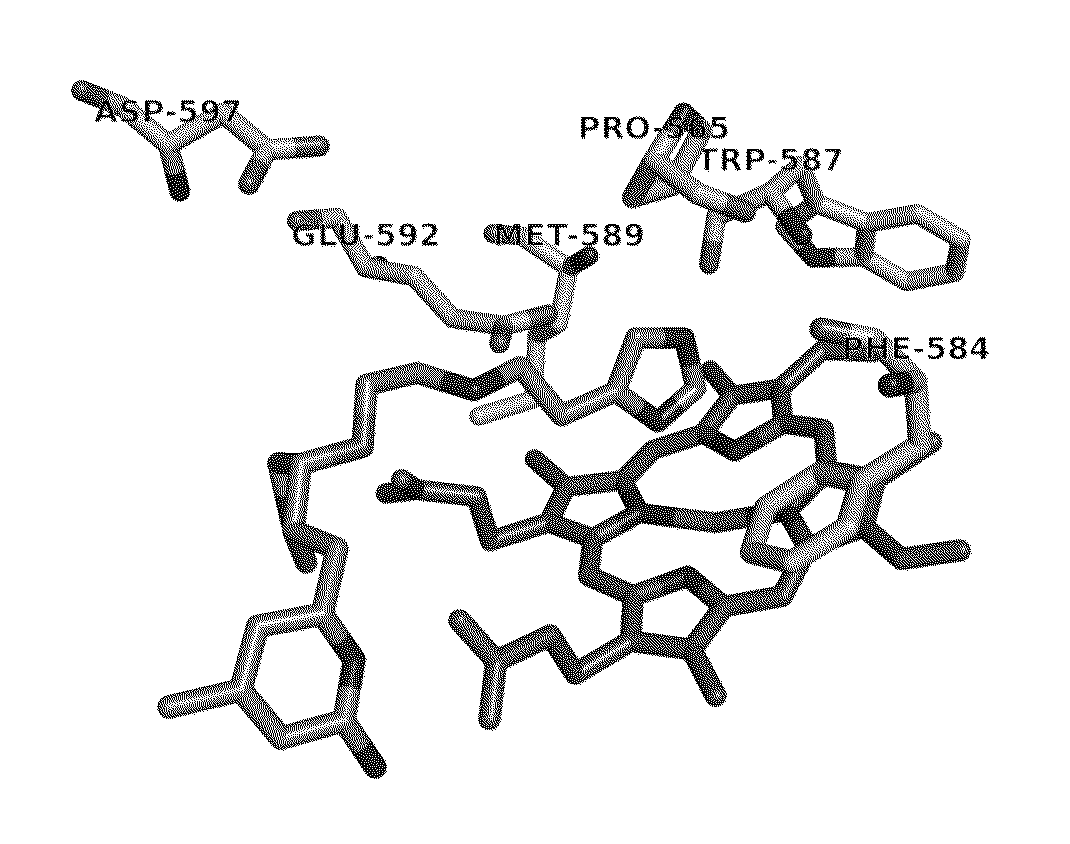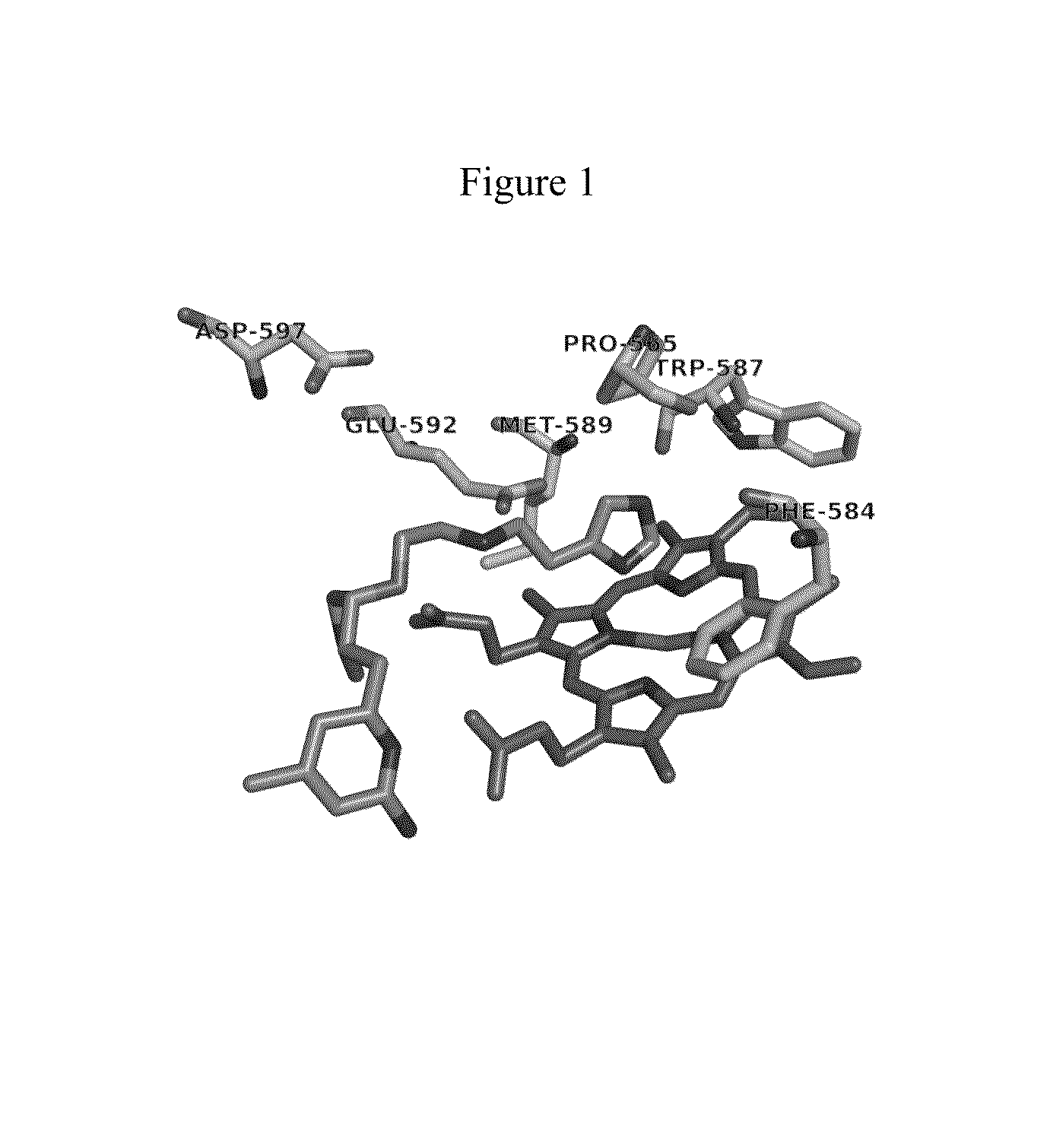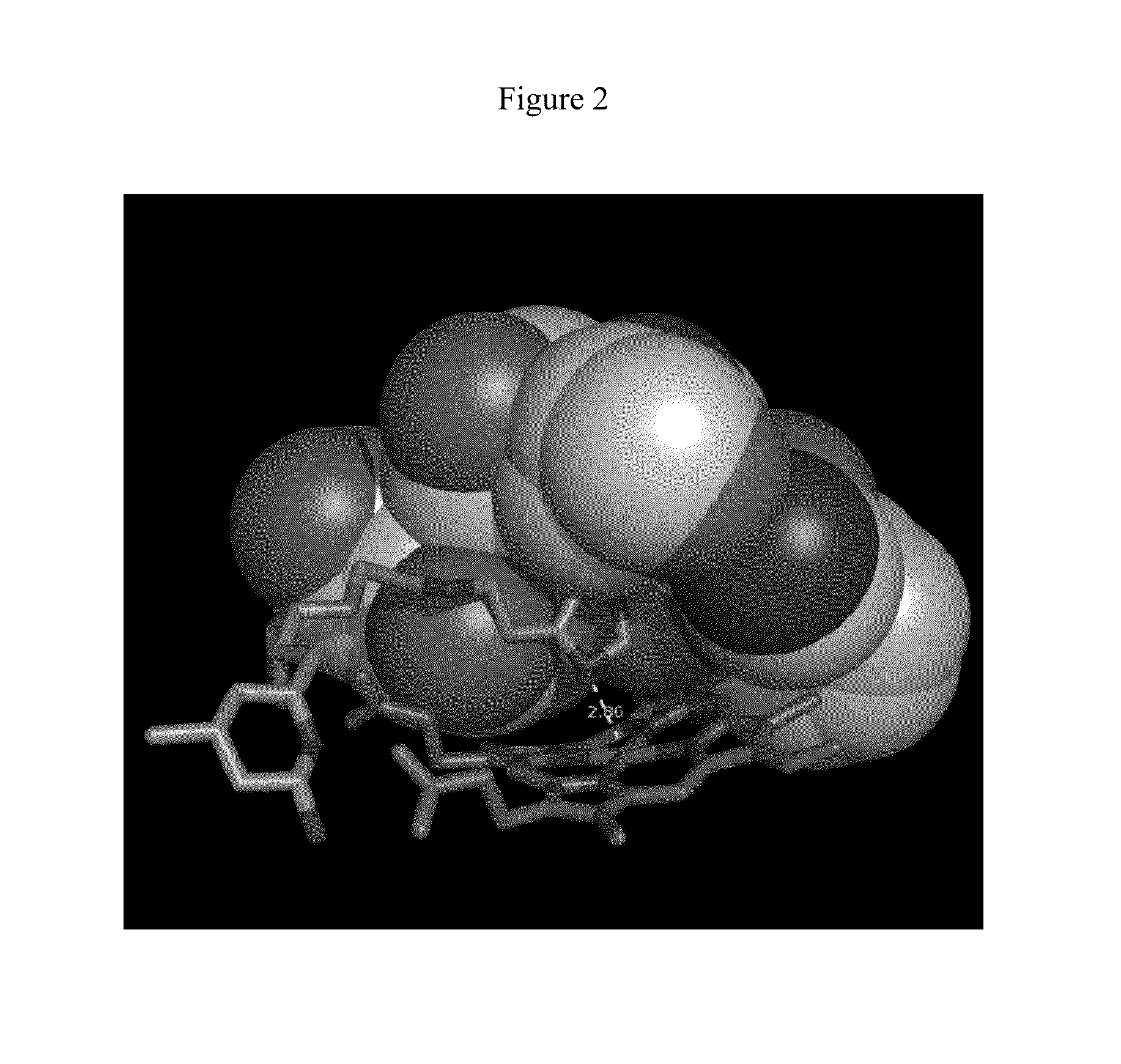Selective neuronal nitric oxide synthase inhibitors with azole substituents
a neuronal nitric oxide and inhibitor technology, applied in the field of selective neuronal nitric oxide synthase inhibitors with azole substituents, can solve the problems of low oxygen levels in the fetal brain, cell membrane depolarization, flooding of cells with calcium,
- Summary
- Abstract
- Description
- Claims
- Application Information
AI Technical Summary
Benefits of technology
Problems solved by technology
Method used
Image
Examples
Embodiment Construction
[0022]As relates to the development of certain embodiments of this invention, a fragment-based de novo computer design methodology called “fragment hopping” has been used to identify the minimal pharmacophoric elements to relate structure and chemical properties with selectivity. (See, e.g., Ji, H.; Li, H.; Flinspach, M.; Poulos, T. L.; Silverman, R. B. Computer Modeling of Selective Regions in the Active Site of Nitric Oxide Synthases Implication for the Design of Isoform-Selective Inhibitors. J. Med. Chem. 2003, 46, 5700-5711; Ji, H.; Stanton, B. Z.; Igarashi, J.; Li, H.; Martsek, P.; Roman, L. J.; Poulos, T. L.; Silverman, R. B. Minimal Pharmacophoric Elements and Fragment Hopping, and Approach Directed at Molecular Diversity and Isozyme Selectivity. Design of Selective Neuronal Nitric Oxide Synthase Inhibitors. J. Am. Chem. Soc. 2008, 130, 3900-3914.) This methodology led to the discovery of a first non-peptidic nNOS selective inhibitor, compound 1.
[0023]
[0024]Racemic compound 1...
PUM
| Property | Measurement | Unit |
|---|---|---|
| pKa | aaaaa | aaaaa |
| distance | aaaaa | aaaaa |
| pKa | aaaaa | aaaaa |
Abstract
Description
Claims
Application Information
 Login to View More
Login to View More - R&D
- Intellectual Property
- Life Sciences
- Materials
- Tech Scout
- Unparalleled Data Quality
- Higher Quality Content
- 60% Fewer Hallucinations
Browse by: Latest US Patents, China's latest patents, Technical Efficacy Thesaurus, Application Domain, Technology Topic, Popular Technical Reports.
© 2025 PatSnap. All rights reserved.Legal|Privacy policy|Modern Slavery Act Transparency Statement|Sitemap|About US| Contact US: help@patsnap.com



